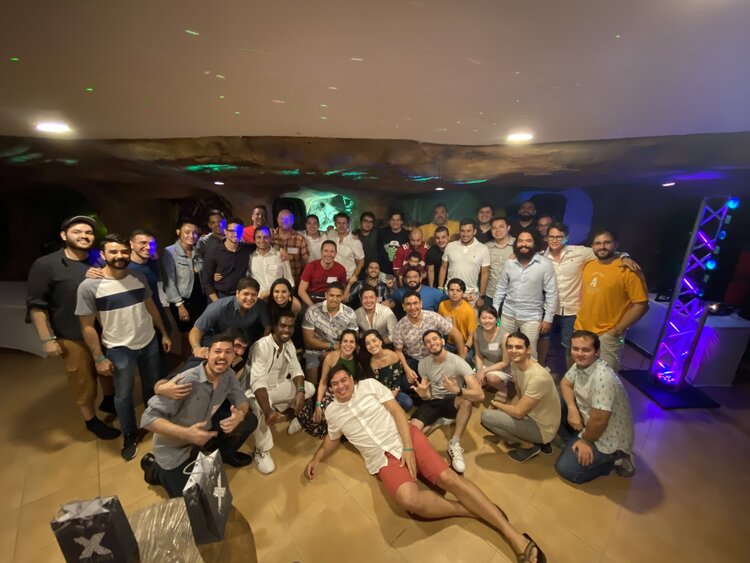So you’ve got a great culture. Teams are tight. Communication is flowing freely. People are not afraid to speak up. Your staff has an energetic attitude and works hard everyday. The vibe is good and it is having positive effects on your top line growth.
But then you open a second office 3 states away to expand sales. You allow some people to work from home because they have new families. You hire an offshore dev team to build the product faster. Those key cultural elements that were your competitive advantage seem to dissolve.
While working remotely with clients for 15 years, we’ve come to realize the importance of culture and how to keep it. We often say, “culture trumps strategy”. You can never be there when employees are making every small decision, but with the right culture it will help guide them to make the right one.
Some additional tangible benefits are:
- Less micromanaging which saves you time to focus on important tasks
- Fluent communication that only needs to be said once and not repeated
- Increased ownership and pride on projects leading to more satisfied customers
Here are 10 secrets we’ve learned over the years we’d like to share with you:
1. Communication is Key
Communication needs to be fast and easy, just as if you were sitting next to someone. Here are some tactics we use to ensure constant communication while remote.
FUN & INTERESTING SLACK CHANNELS
Create interesting and unique channels where people can engage in “water cooler conversations”. We have ‘Great Reads’, ‘I'm a Chef’, and channels to share events/music. Slack also has a new tool called Donut that pairs two people randomly every certain time so that they can interact and talk to each other.
CHECK IN CALLS
Distance makes the hallway run-in impossible so you need to be proactive about having casual conversations with people. Set up 10 or 15 minute convos once a week with key people whether that is your direct reports or key team members. And don’t skip them if you have nothing to talk about. Just asking, “What are you working on these days” can lead to some of the most insightful conversations between employees.
INTRO EMAILS
Who doesn’t love their first day at the office? Walking the floor meeting everyone, settling in at your new desk, and feeling eager to learn. Try to mimic these aspects by giving a warm welcome emails to new people on the team and encourage others to learn more about them and their personalities.
MONTHLY NEWSLETTER
The monthly newsletter helps the team stay in the loop in regards to what is going on in the company. In our monthly newsletter we welcome new employees, have a chart of what account each person is working on and share interesting blog posts. Since we have many people who love to cook, also publish a recipe in every newsletter. Our newsletter contains job anniversaries and birthdays as well as information about upcoming events with a link for people to tune into wherever they are. The tone of our newsletter really depicts our culture, we try to make what can be a normal newsletter, a relaxing coffee break for the employees. This is a chance to read up on something new, to get interested in trying out a new recipe and to learn more about their coworkers. In the job anniversary section we describe each person and we thank them for their hard work and the time they are with us. The goal here is to celebrate the employee and for other employees to get to know more about this person beyond work.
2. Public access to everything
In an office environment, there is tons of information spillover because you can overhear other conversations. This is completely cut off for remote teams causing information flow to halt. Therefore it is really important to overshare and make sure all digital documents are available for everyone. Provide necessary training to ensure staff knows where everything is, even if it doesn’t directly relate to them. You want your employees to be curious and be self sufficient at hunting down information when they need it.
3. Remote teams need activities too
When planning events or parties, it is easy to forget about remote teams, especially if they are small. When we have Easter egg hunts, Halloween costume contests, or fun runs, we make sure everyone can participate no matter where they are.

4. Personalize appreciation
We have an MVP program where anyone can nominate anyone else on the team for a job well done. This can be a person that has helped with a work-related task or something personal. The goal is to encourage personal interactions and recognize achievement company wide.
We use a #shoutout channel on Slack where we recognize another person's efforts. Great way to motivate and inspire everyone!
5. Organize and encourage gatherings
Even when remote teams are small, less than 5, we encourage them to gather to work in a co-working space together, grab lunch or meet for happy hour.
6. Annual kick off party
We always have an annual company party. Every year we gather in Panama where we go to a resort with our families and have a great time. There is tremendous power in meeting someone fact-to-face or sharing a beer together. Even if this is for an hour or just a day, it creates a very special bond and makes the connection even stronger in the months and years to come.

If you’d like to learn more about how Admios can be an extension of your development team and your culture, click here to set up a quick 15 minute call with us.


